41 pictures that tell the story of COVID in the UK as cases reach one million

The UK has reached another unwanted milestone of the coronavirus pandemic after it surpassed one million COVID-19 cases.
It took exactly nine months for lab-confirmed infections to hit the one million mark on Saturday, during which the nation has experienced unimaginable upheaval.
Saturday also marked Boris Johnson announcing a second national lockdown for England.
Here are 41 pictures that tell the story of the pandemic so far.
31 January (2 cases)
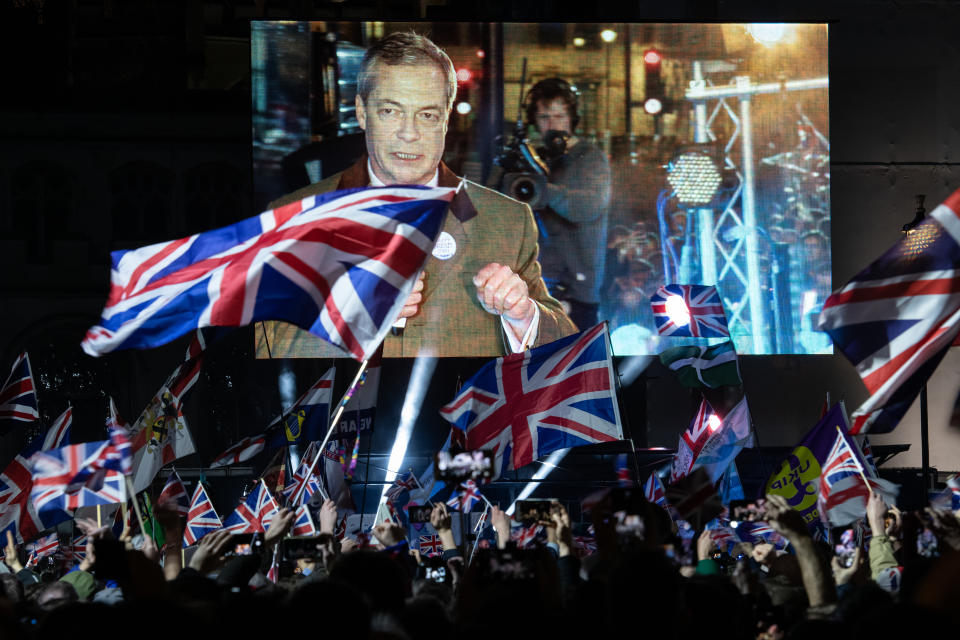
Nigel Farage leads a rally in Parliament Square as the UK’s departure from the EU is confirmed. It was the night everything changed – but not because of Brexit. It was the night the UK’s first two COVID infections were confirmed.
3 March (51 cases)
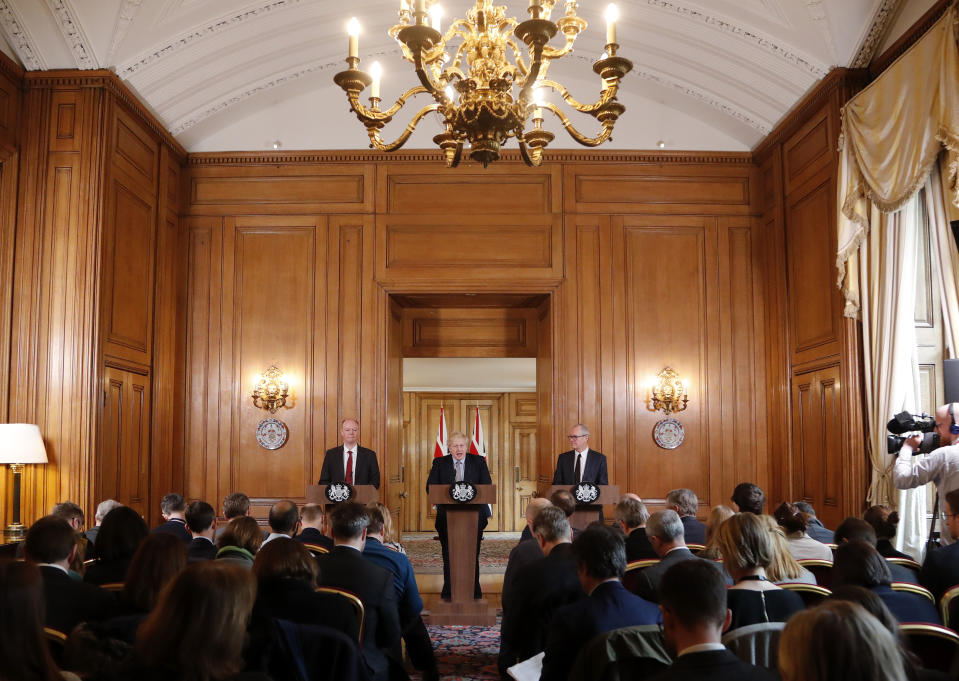
As case numbers slowly creep up, the “three amigos” – Prof Chris Whitty, Boris Johnson and Sir Patrick Vallance – hold the first coronavirus press conference in Downing Street. It would become familiar sight in 2020, although the reporters would soon be gone and the “amigos” spaced further apart.
6 March (160 cases)
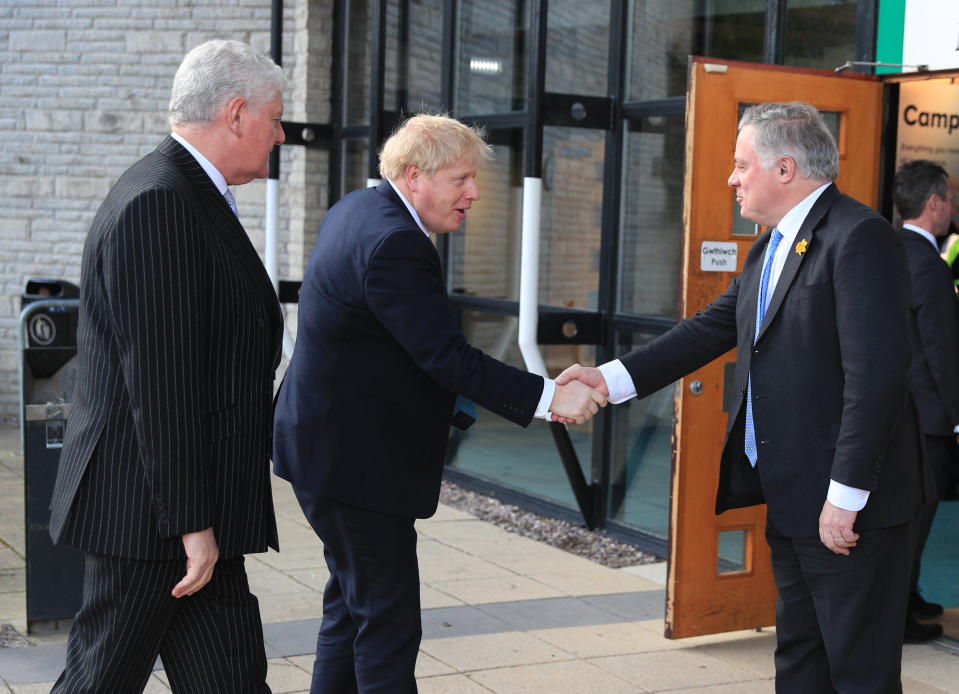
Johnson shakes hands as he arrives at the Welsh Conservative Party conference. Three days earlier, the prime minister had pledged to continue shaking hands, despite the spread of the virus.
11 March (456 cases)

Liverpool fans at Anfield for the Champions League match with Atletico Madrid. To this day, it remains the last major sporting event in the UK to have been played in a full arena of spectators.
20 March (3,983 cases)
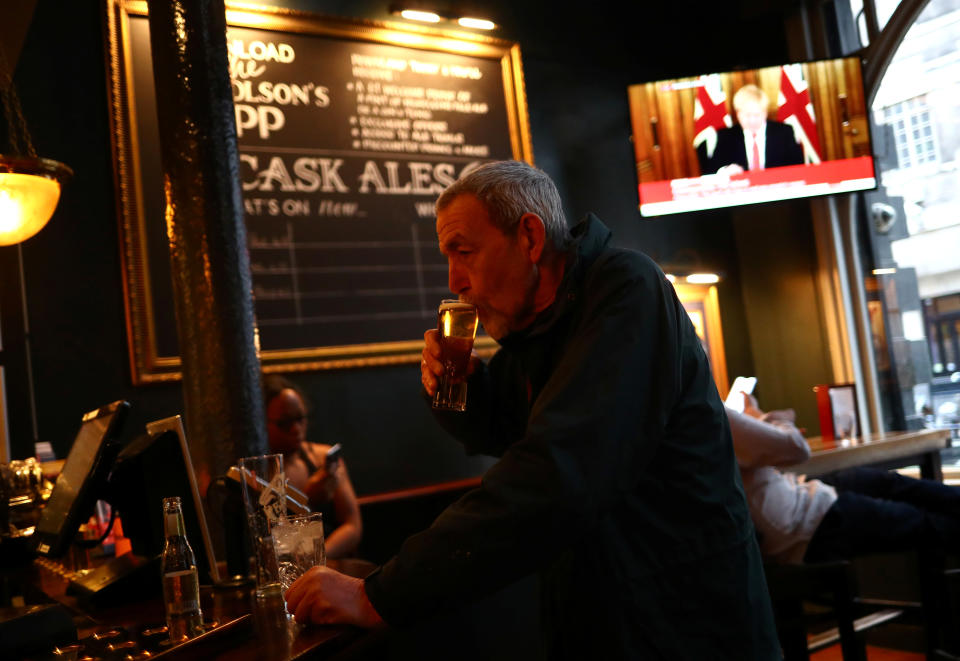
A man sips a beer in a London pub as Boris Johnson orders hospitality and entertainment businesses to close indefinitely that night.
23 March (6,650 cases)

A family watches as Boris Johnson announces the national lockdown. In an extraordinary address to the nation, he says: “You must stay at home.”
24 March (8,077 cases)
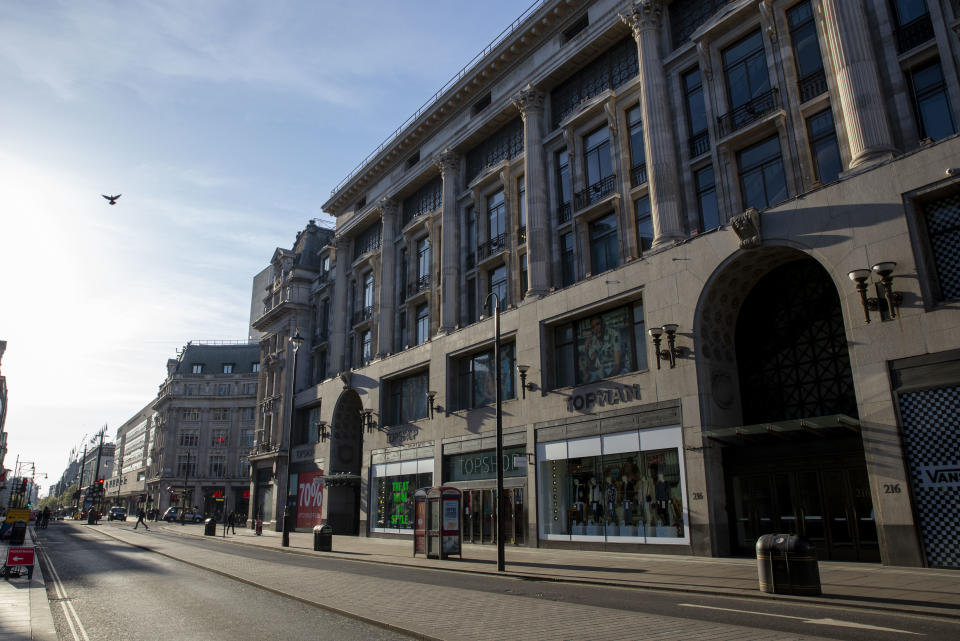
A deserted Oxford Street in central London on the first full day of lockdown.
26 March (11,658 cases)
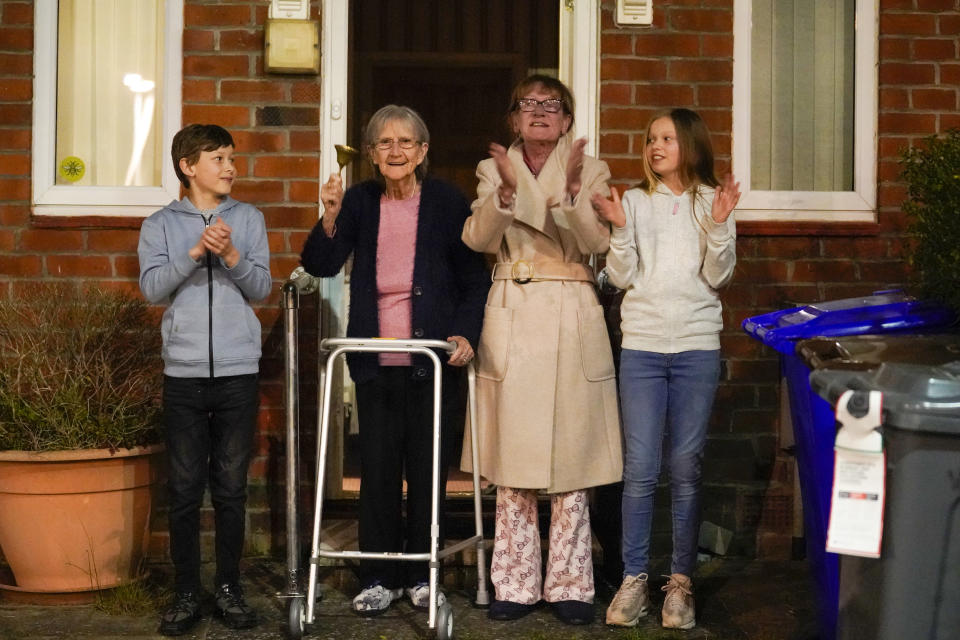
The first weekly “clap for our carers”, in which households across the nation gather on their doorsteps to applaud the efforts of NHS and care workers during the pandemic. Barbara Leigh, 93, second right, rings a bell with her family at their home near Wythenshawe Hospital in Manchester.
2 April (34,610 cases)
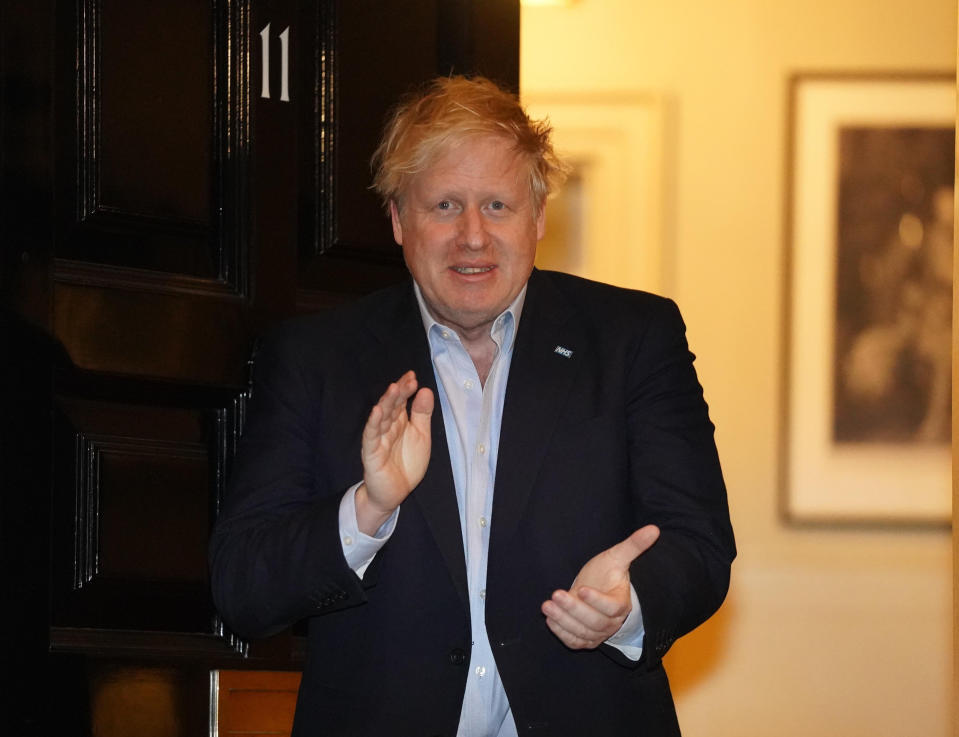
Boris Johnson in Downing Street for the second “clap for our carers”. It was his first public appearance since testing positive for COVID on 27 March.
3 April (39,282 cases)

Health secretary Matt Hancock at the opening of NHS Nightingale London, a temporary hospital at the ExCeL London exhibition centre to add healthcare capacity during the pandemic. It was built in just nine days, and more Nightingales followed across the country.
6 April (53,624 cases)

Police stand guard outside St Thomas’ in Westminster, after Boris Johnson is moved into intensive care a day after being admitted to the hospital. He comes close to death, but is moved out of intensive care three days later.
12 April (85,279 cases)

Boris Johnson in an address to the nation after his discharge. “I today left hospital after a week in which the NHS has saved my life – no question.”
16 April (103,093 cases)
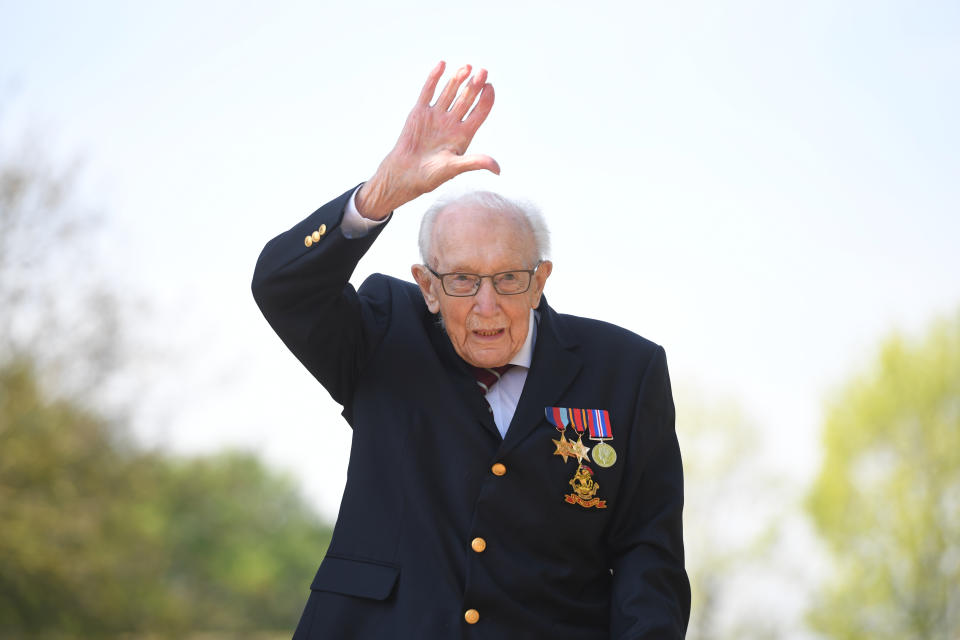
Captain Tom Moore, 99, at his home in Marston Moretaine, Bedfordshire, after achieving his goal of 100 laps of his garden. His efforts help to raise nearly £33m for the NHS.
27 April (157,149 cases)

Boris Johnson outside Downing Street as he returns to work following his near-death experience with COVID.
10 May (219,183 cases)
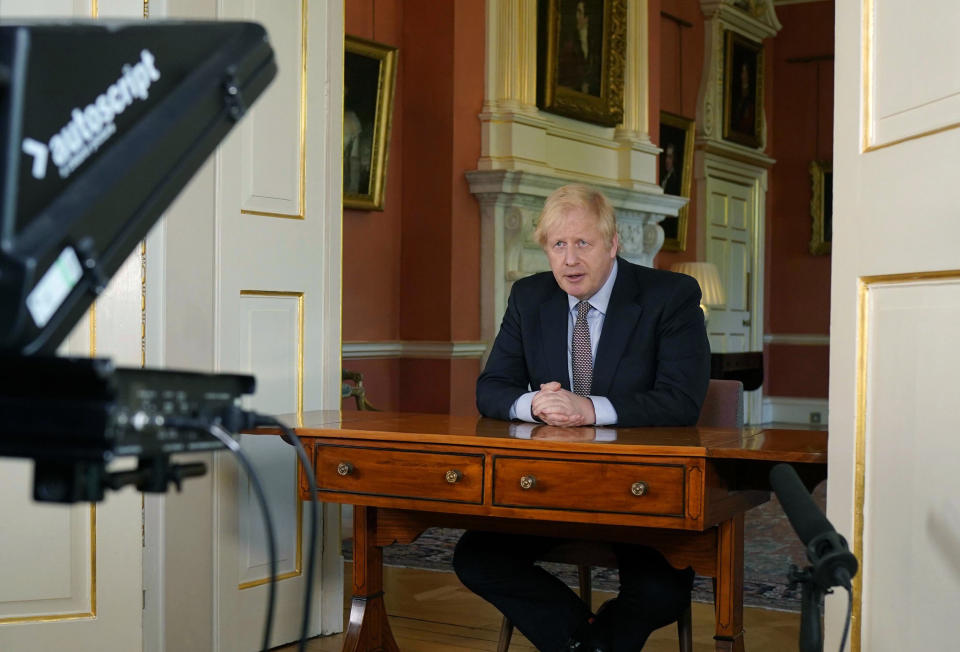
Johnson records an address to the nation as he announces the first easing of lockdown restrictions.
13 May (229,705 cases)
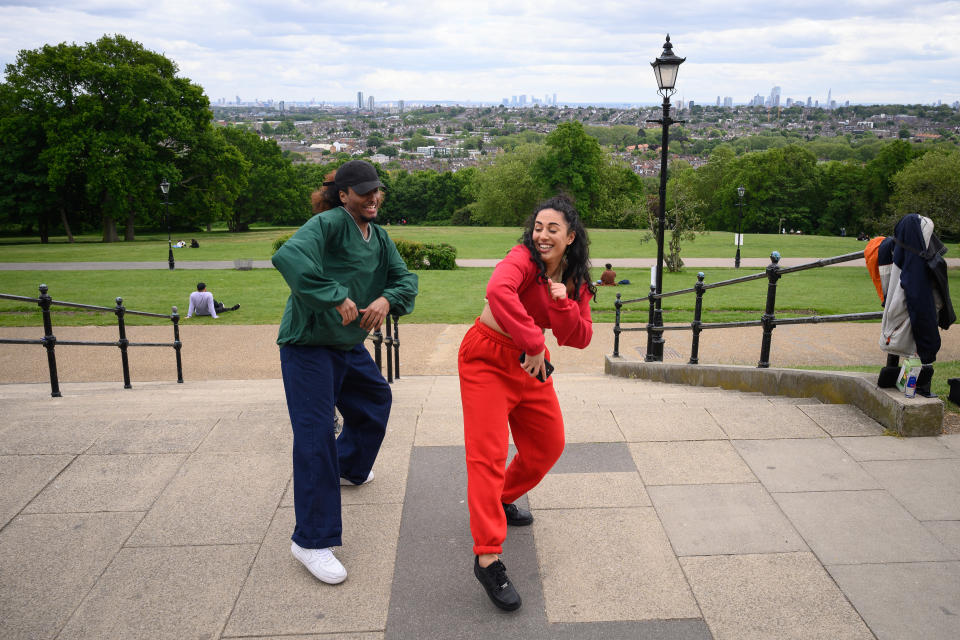
The first day since lockdown that unlimited outdoor exercise is allowed. Two dancers make the most of it in Alexandra Park, north London.
25 May (261,184 cases)

Boris Johnson’s chief adviser, Dominic Cummings, holds an extraordinary press conference in the Downing Street rose garden to explain his actions after it emerges he drove hundreds of miles to his parents’ home in Durham shortly after lockdown was imposed. While there, he also made a now-infamous trip to Barnard Castle “to see if I could drive safely” after experiencing a loss of vision while suffering COVID symptoms. Amid huge public anger, Johnson faced widespread calls to sack Cummings – but he kept his job.
1 June (276,332 cases)

Children wash their hands at Heath Mount School in Watton-at-Stone, Hertfordshire, as schools begin to reopen for Reception, Year 1 and Year 6 pupils.
2 June (277,985 cases)

MPs, including House of Commons leader Jacob Rees-Mogg, left, form a massive queue outside the Houses of Parliament in order to vote. Rees-Mogg had dropped procedures that allowed members to vote online and speak remotely via Zoom. Labour MP Tan Dhesi tells Yahoo News UK that images of the “Rees-Mogg conga” were making the nation an “international laughing stock”.
6 June (284,868 cases)

World heavyweight boxing champion Anthony Joshua at an anti-racism protest in Watford, one of many that take place across the country following the killing of George Floyd in the US. Health secretary Matt Hancock had urged people not to take part in the national demonstrations, citing lockdown rules.
15 June (296,857 cases)

Non-essential retail shops are allowed to reopen. Sue Stamp fits a young girl with a new pair of shoes from behind a perspex screen at W.J. French and Son in Southampton.
29 June (311,965 cases)
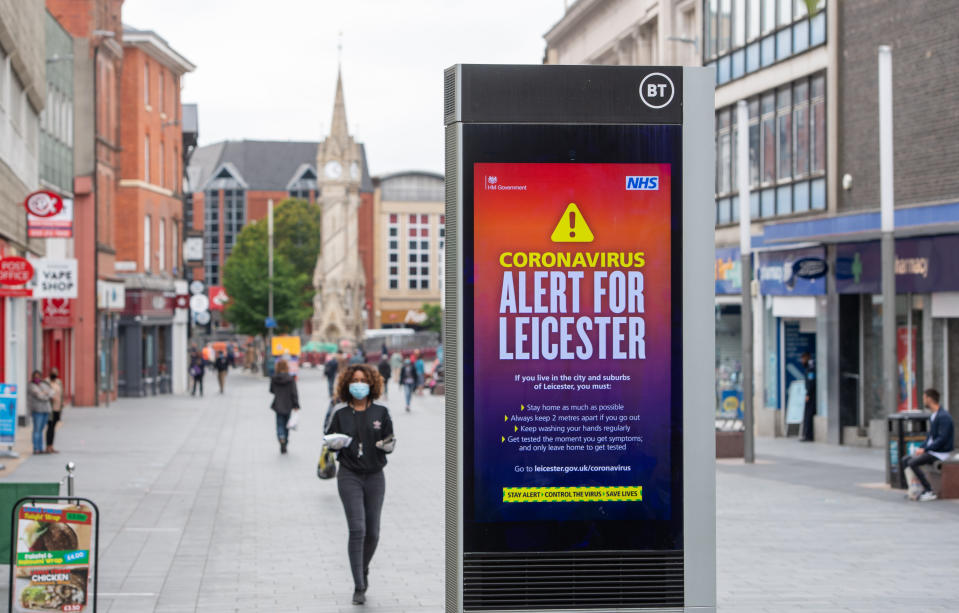
Restrictions are reimposed on Leicester, in a sign of the government’s localised approach that would follow.
4 July (284,900 cases*)
*infection data was re-evaluated on 2 July, leading to the de-duplication of some figures and therefore a decrease in the total number of cases
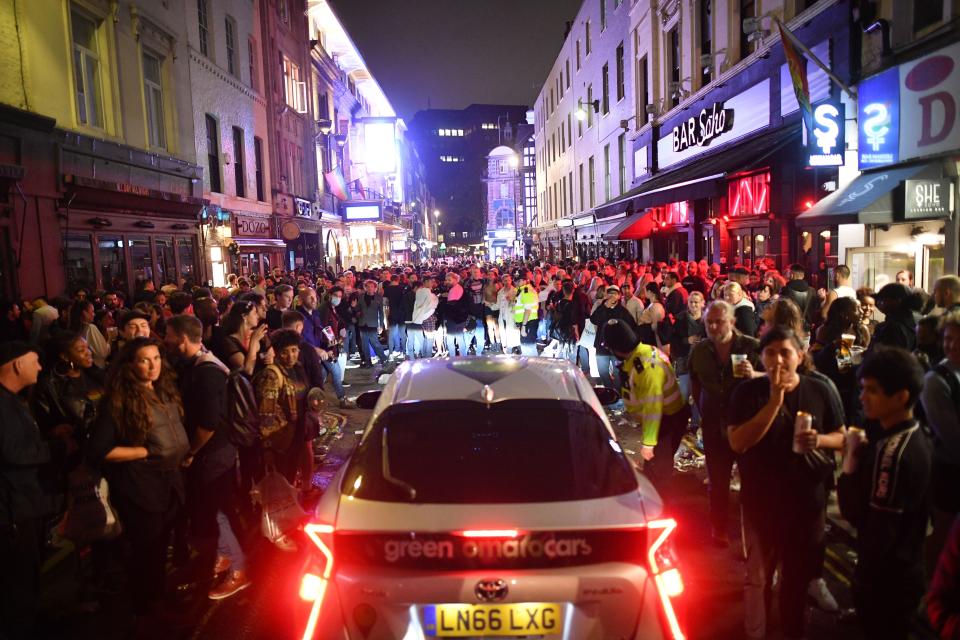
A car tries to drive through a crowded street in Soho, central London, on the day pubs were allowed to reopen – bringing cheer to the industry and drinkers but fears of fresh COVID cases. Businesses such as restaurants and hairdressers are also allowed to reopen on the same day.
24 July (297,914 cases)
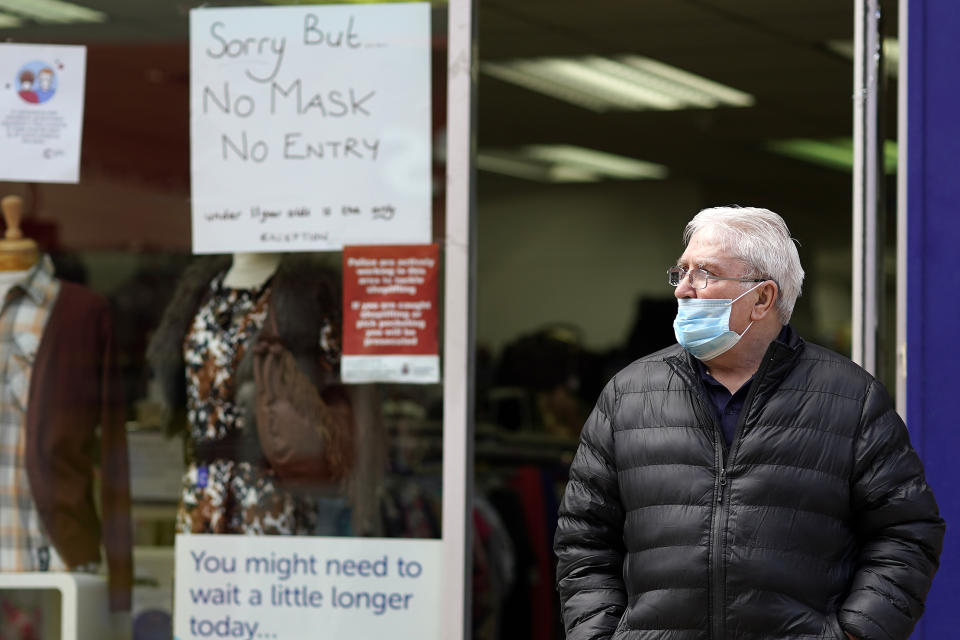
Face coverings become mandatory in shops in England. They had also been made compulsory on public transport in June.
3 August (305,623 cases)

A waiter serves pizzas in Kingly Court, central London, as chancellor Rishi Sunak launches the “Eat Out to Help Out” scheme to get people spending in hospitality businesses again. The scheme, which gave people a 50% discount off their food bill, applied on Mondays, Tuesdays and Wednesdays throughout August.
8 August (309,763 cases)
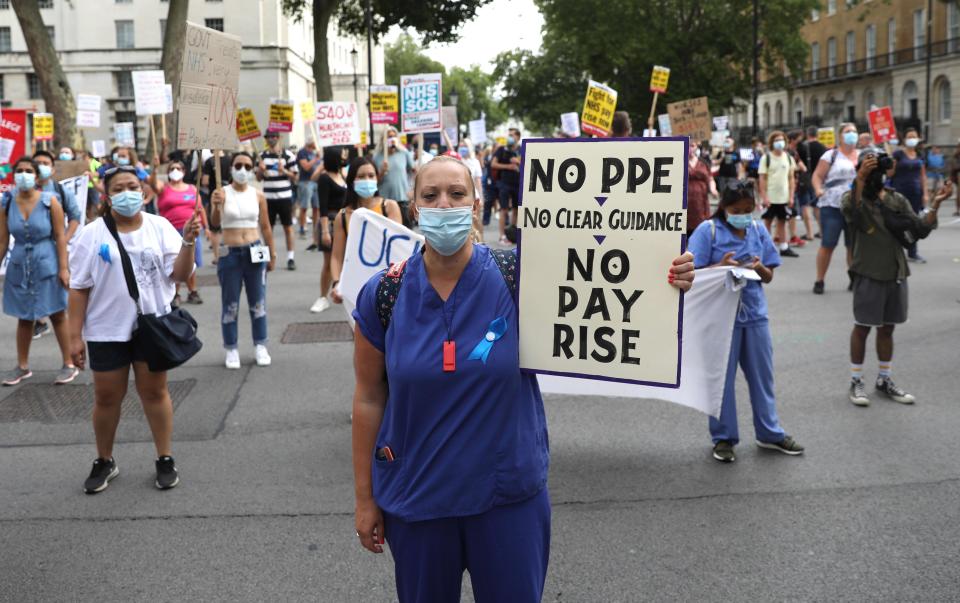
NHS workers protest outside Downing Street as they demand a pay rise. Unions were calling for rises scheduled for 2021 to be brought forward as a gesture of thanks for the efforts of NHS staff during the pandemic. One protester, Laura Duffell, told Yahoo News UK that workers felt “stabbed in the back”.
17 August (319,197 cases)

Codsall Community High School students protest outside the constituency office of education secretary Gavin Williamson following the A-level grading fiasco. It saw nearly 40% of results downgraded due to an algorithm aimed at standardising results, after exams were cancelled due to the pandemic. Later that day, Williamson performed a major U-turn as he dropped the algorithm and allowed results to be based on teacher predictions.
1 September (337,168 cases)
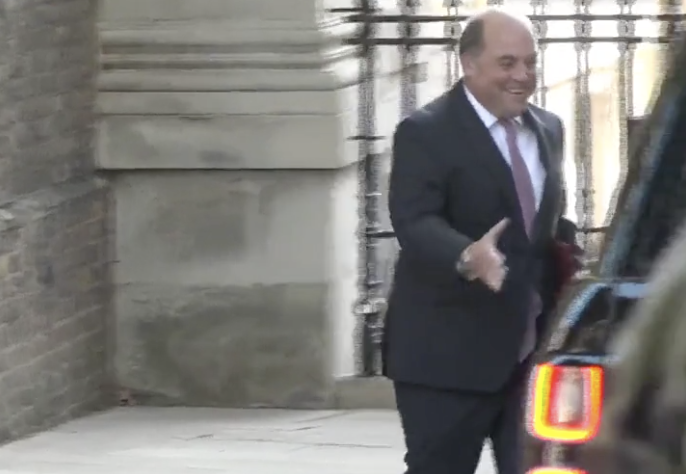
As Parliament returns following the summer recess, cabinet minister Ben Wallace is caught shaking hands with an unknown man in Downing Street – in a breach of his own government’s social distancing rules. He later apologises for “slipping up”.
14 September (371,125 cases)
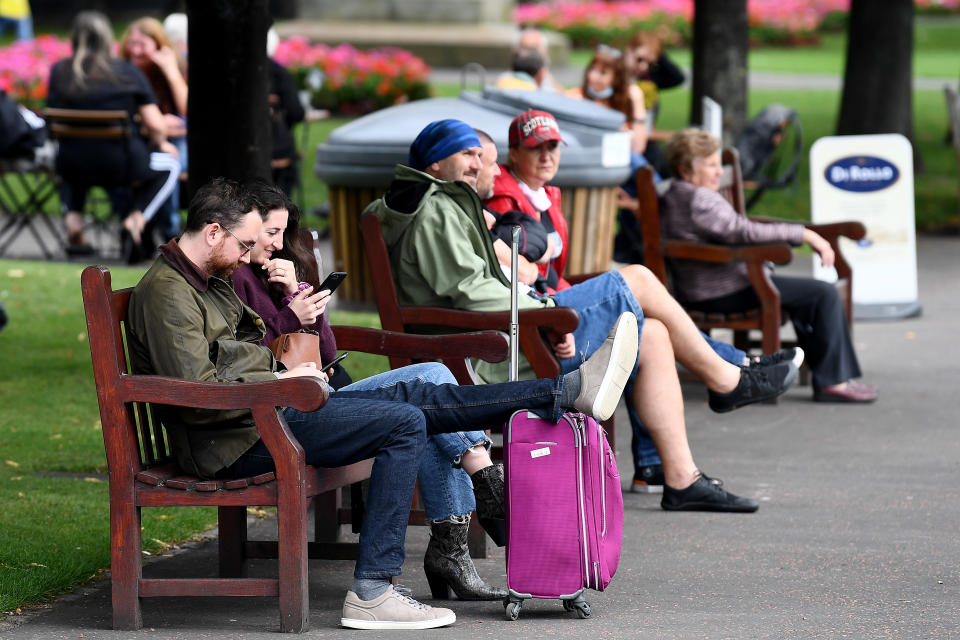
People in a park in Edinburgh as Scotland, England and Wales introduce new “rule of six” restrictions banning most social gatherings of more than six people indoors and outdoors. It’s a response to daily infections slowly creeping up.
17 September (381,614 cases)
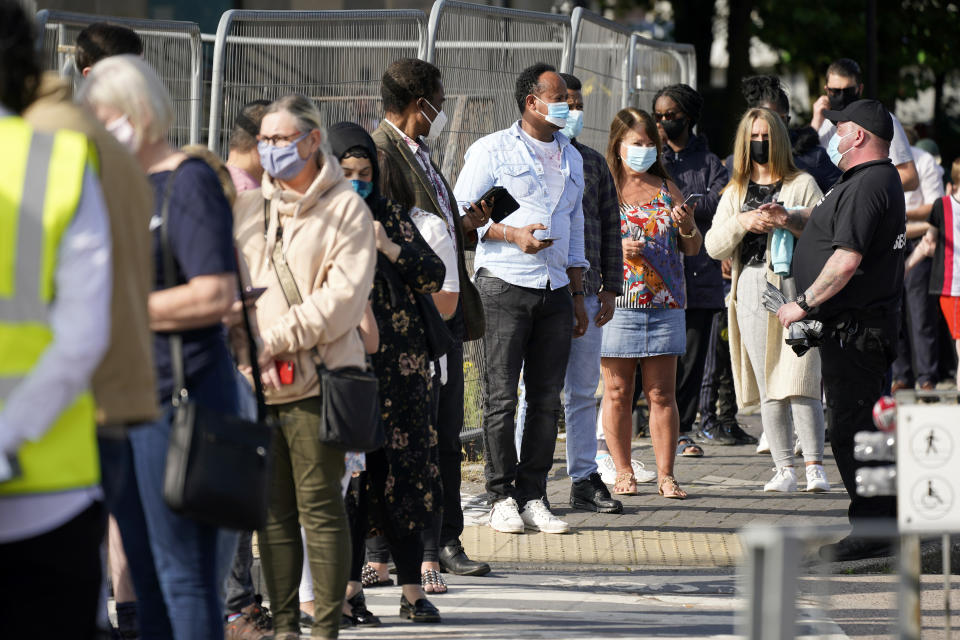
A long queue of people outside a COVID testing centre in Bolton as under-pressure NHS Test and Trace chief Dido Harding admits up to 75% of people who want a test are unable to get one. She told MPs: “There is significantly more demand than there is capacity.”
18 September (385,936 cases)

Boris Johnson visits a construction site in Didcot, Oxfordshire, during which he tells reporters the UK is in the “second wave” of the pandemic.
21 September (398,625 cases)
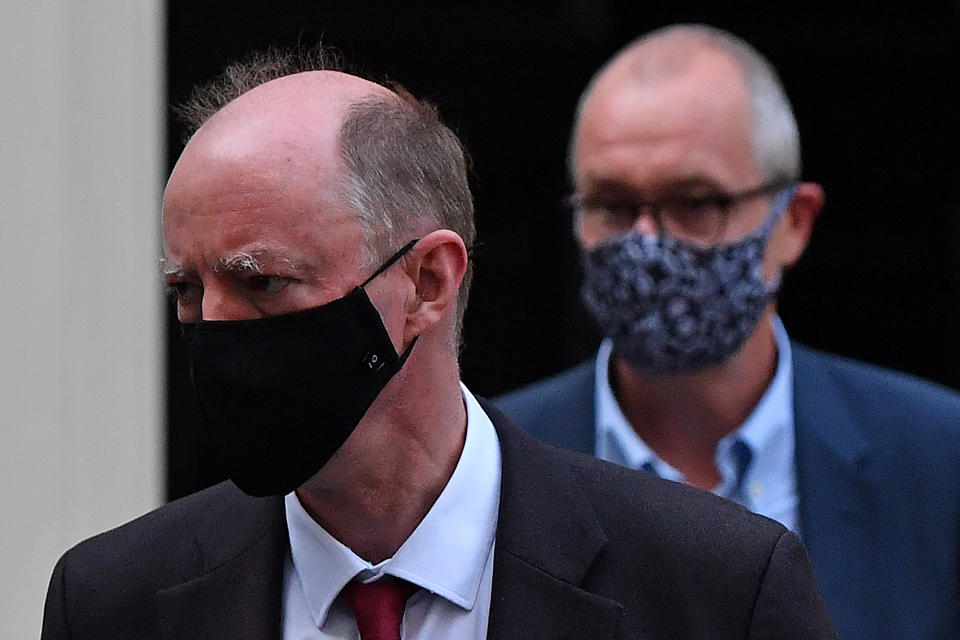
Prof Chris Whitty and Sir Patrick Vallance leave Downing Street after a press conference in which they issue dire warnings about the spread of the virus. Sir Patrick warns COVID infections are doubling “roughly” every seven days.
22 September (403,551 cases)

Boris Johnson in the House of Commons as he announces a raft of new measures, lasting six months, to restrict the spread of COVID. They include telling office workers to work from home – a reversal of previous policy – and a 10pm curfew for pubs and restaurants. “This is the moment when we must act,” he tells MPs. In an address to the nation later that day, the PM blames COVID rule breakers for the second wave of infections.
28 September (439,013 cases)
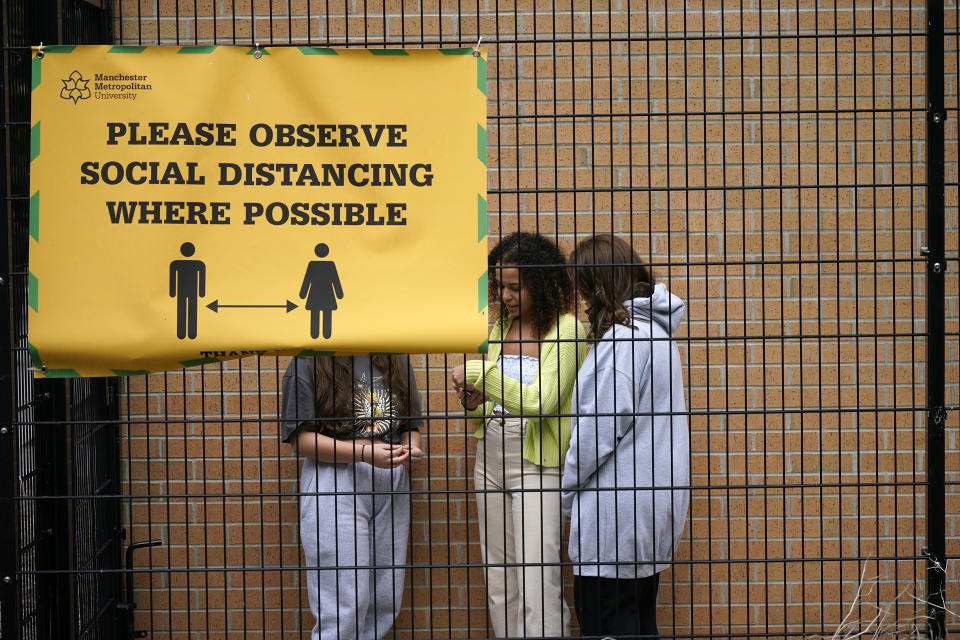
University students behind security fencing in Manchester. They are among thousands of students in the city forced to self-isolate after COVID outbreaks – with similar situations at other universities across the country.
12 October (617,688 cases)
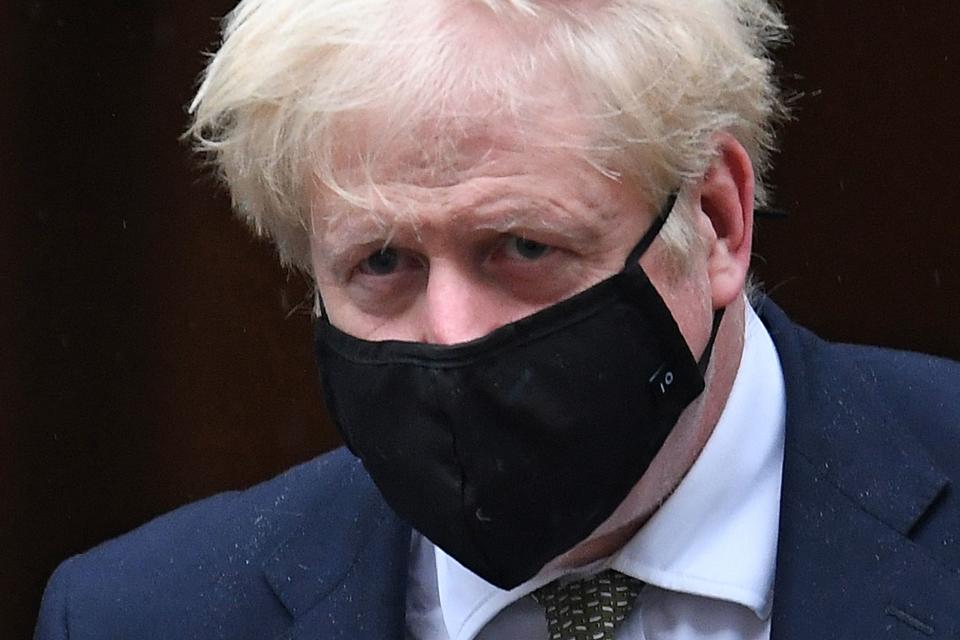
Boris Johnson leaves Downing Street ahead of another major announcement in the House of Commons: the three-tier local lockdown system for England. It later emerges that in September, the Scientific Advisory Group for Emergencies (Sage) had advised a more severe “circuit breaker” national lockdown instead.
13 October (634,920 cases)
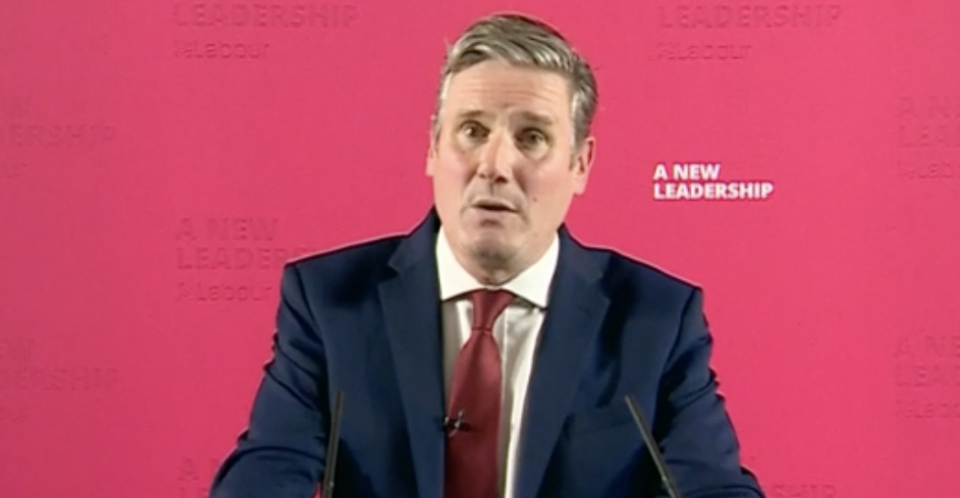
Labour leader Sir Keir Starmer seizes on the ignored Sage advice by calling for a circuit breaker lasting up to three weeks. “There’s no longer time to give this prime minister the benefit of the doubt,” he says at a press conference.
14 October (654,644 cases)
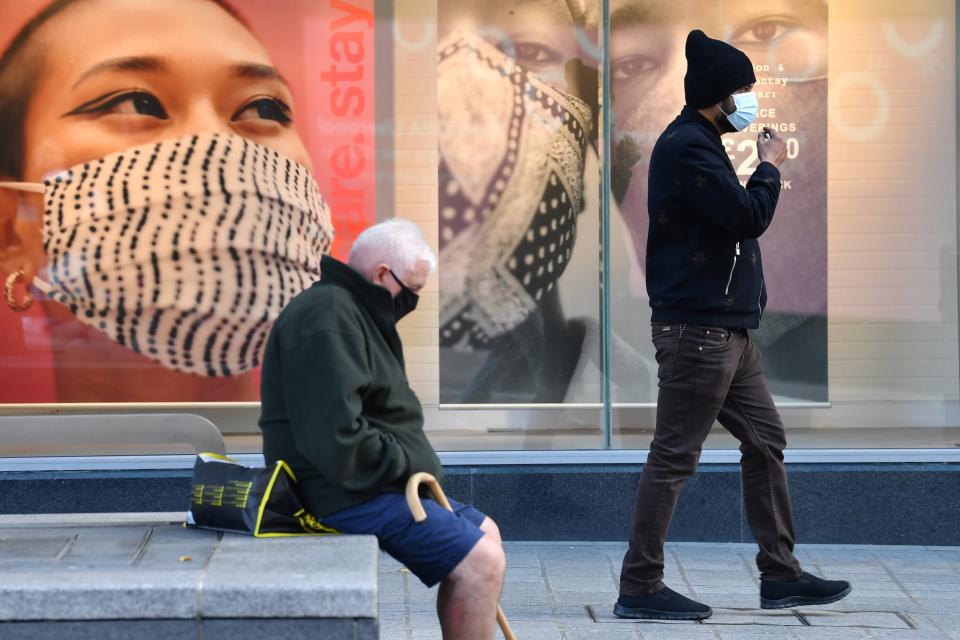
Pedestrians in Liverpool city centre as the three-tier system comes into force. Liverpool, with a high COVID rate, is the first to go into Tier 3: the most severe set of restrictions which include bans on household mixing and pub closures. Other areas soon follow into Tier 3 in the coming weeks.
19 October (741,212 cases)
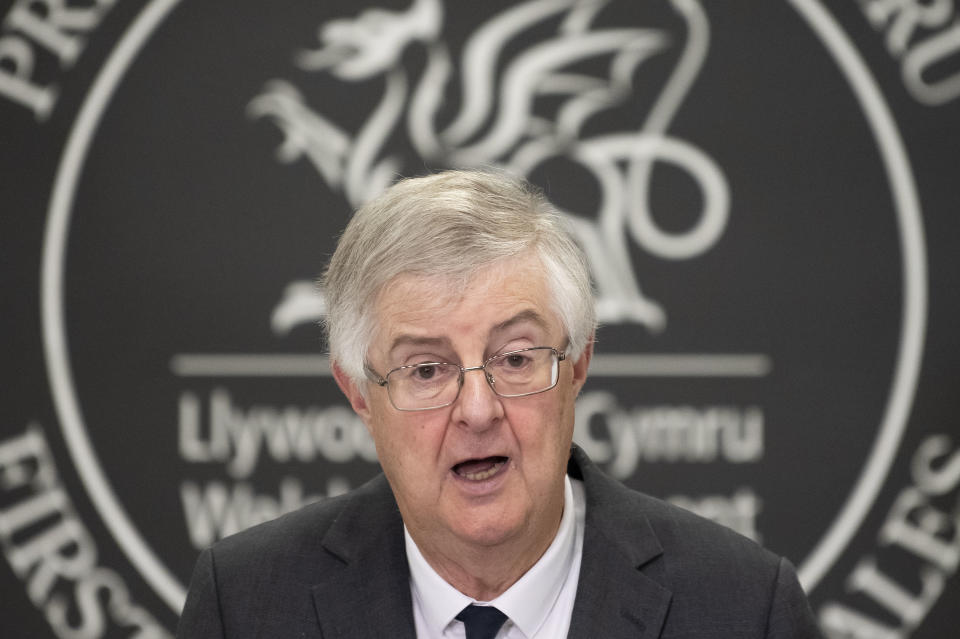
Wales becomes the first UK country to re-enter a national lockdown as first minister Mark Drakeford announces a “sharp and deep fire break” lasting 16 days.
20 October (762,542 cases)
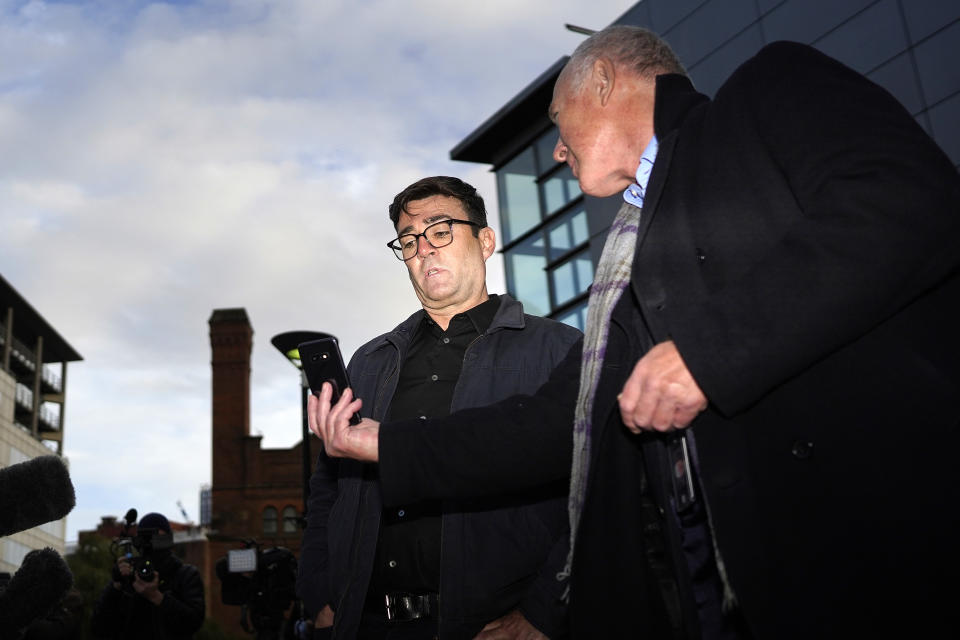
The moment Greater Manchester mayor Andy Burnham finds out the government has forced his region into a Tier 3 lockdown. It follows a bitter fallout with Downing Street over the size of a financial package to help Greater Manchester through the restrictions.
28 October (942,275 cases)

Manchester United and England footballer Marcus Rashford walks off the Old Trafford pitch after scoring a hat-trick against RB Leipzig in the Champions League. It comes as his petition calling for the government to provide free school meals during school holidays hits one million signatures. Since the summer, Rashford has been arguing many children would be going hungry during half-term breaks as a result of parents losing their jobs and income during the pandemic.
31 October (1,011,660 cases)
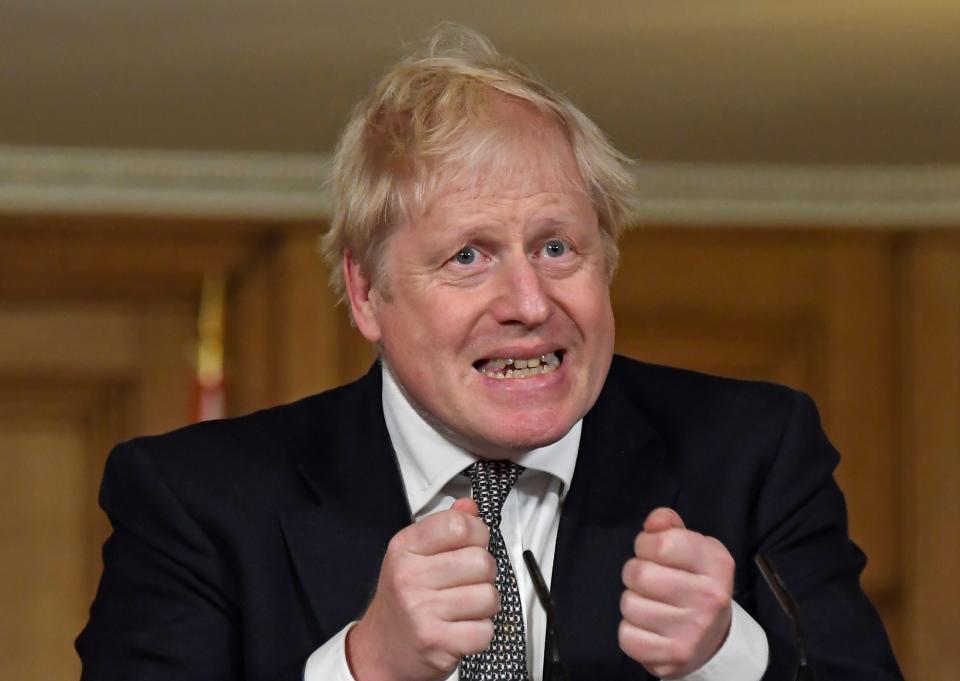
As cases pass one million, Boris Johnson announces a second national lockdown for England at a Downing Street press conference. He says it is necessary to prevent a "medical and moral disaster" for the NHS.
Watch: What is long COVID?
Coronavirus: what happened today
Click here to sign up to the latest news and information with our daily Catch-up newsletter

 Yahoo Finance
Yahoo Finance 
